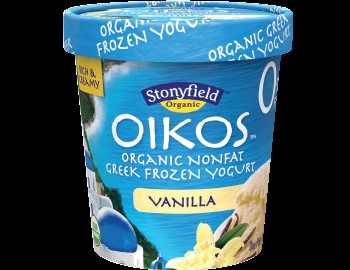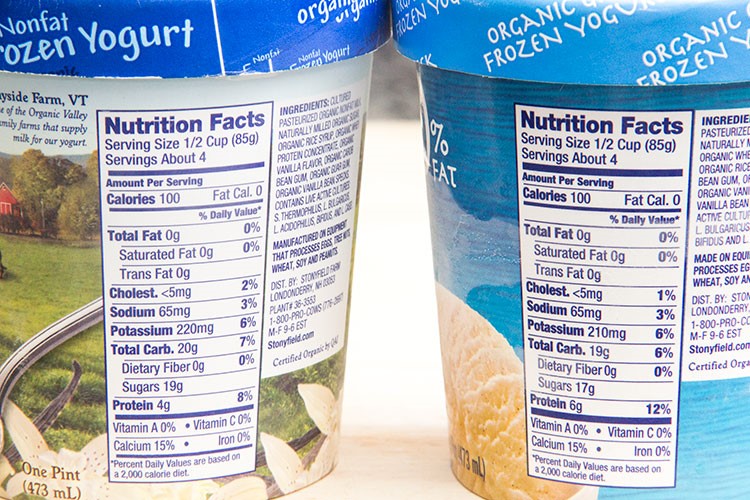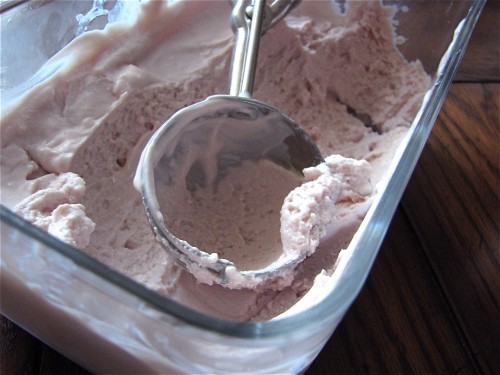Frozen Yogurt—Is It REALLY What It Says It Is?

What's one of the most popular frozen desserts around? Move over ice cream-it's frozen yogurt. The popularity isn't hard to explain, either. By implying that their products have the indulgent taste of ice cream but still offer many of the same nutritional benefits as refrigerated yogurt, frozen yogurt manufacturers have convinced a growing population of health-conscious consumers that they're not sacrificing that much by switching to the dessert-and might actually be doing themselves a favor by eating it. Hmm, I wonder.

So I took my wondering to where else? The folks at America's Test Kitchen. And they had indeed checked out the frozen yogurt claims. Wanting to know if the huge popularity of this current generation of supermarket frozen yogurts was warranted, they scooped up eight of the best-selling national products, both low-fat and nonfat versions, in the most straightforward flavor: vanilla.
Whether a frozen yogurt had the flavor of traditional vanilla ice cream or the tartness of a refrigerated yogurt, they were looking for a rich, creamy texture and clean, not-too-sweet flavor.
First, though, these pros did their research into how much these frozen desserts have in common with refrigerated yogurt-and it turns out, it's tricky. The U.S. Food and Drug Administration (FDA) has only a loose definition for refrigerated yogurt, and none whatsoever for frozen yogurt. In fact, the FDA doesn't even regulate how many live and active cultures the refrigerated product should contain-and of course, the presumption that yogurt contains a significant dose (specifically of Lactobacillus bulgaricus and Streptococcus thermophilus) is the main reason it's considered a health food in the first place.

The Test Kitchen folks concluded that it's best to take the label "yogurt" on frozen yogurt packaging lightly, along with mentions of live and active cultures on the ingredient list. Even if a frozen yogurt starts out with lots of bacteria, that doesn't mean those bacteria will make it through the manufacturing process.
For example, heat-treating the dairy after culturing (a practice used to prolong shelf life or reduce tartness) will kill off virtually all the bacteria-and since there are no regulations for frozen yogurt, manufacturers aren't required to tell you what they've done. What's more, even if a frozen yogurt hasn't been heat-treated, the vast majority of bacteria that it contains before it's frozen is likely to die off during freezing. According to Donald Schaffner, extension specialist in food science, director of the Center for Advanced Food Technology, and professor at Rutgers University, "It's possible, or even likely, that the freezing process might kill off anywhere from 90 to 99 percent of bacteria."
These aren't the only reasons to doubt frozen yogurt's value as a "healthy" dessert. While it is generally lower in fat compared with ice cream, it usually contains nearly as much sugar. Most frozen yogurts are also loaded with a laundry list of additives, stabilizers, and other mystery ingredients.

But with the research aside, the Test Kitchen folks carried on with their tasting to see if any of the supermarket products offered at least good flavor and texture. But even the news on that front wasn't great. With a few exceptions, the yogurts either tested their tolerance for sweetness or exhibited odd off-flavors.
Even more damning were their textures-no surprise, since when you remove fat from a frozen dairy product, it becomes more difficult to attain an ultra-smooth consistency. Some products were rock hard and others were fluffy like whipped cream cheese. And the better brands achieved "smooth," "light" creaminess thanks to corn syrup. Corn syrup inhibits iciness by restricting the movement of the water molecules so that they are less likely to link up and form large crystals. Corn syrup also depresses the freezing point of frozen yogurt, which makes it less vulnerable to the constant thawing and refreezing involved in transporting a frozen dessert.
Then there were the stabilizer issues. They also help prevent ice crystal formation and boost creaminess perception. In fact, their role is even more crucial in frozen yogurt than it is in ice cream, since frozen yogurt's lower fat and higher moisture contents make it especially vulnerable to ice crystal formation. Carrageenan is particularly effective when combined with milk protein and corn syrup; together they form a custardy gel so strong that it replicates the texture of cream.
There was one stabilizer-free product tested, but it went from rock hard to soup in minutes.

The Test Kitchen's conclusion? If you're after a healthy treat, which is what attracts us to frozen yogurt in the first place, why not just make your own yogurt at home? It's easy and you're guaranteed the live cultures you're after, minus all the junk the frozen yogurt manufacturers add to their products. Mix in pureed fruit, and freeze your own. So thank you America's Test Kitchen, I'm wondering no more!
- www.sparkpeople.com
- www.americastestkitchen.com
- www.thescrumptiouspumpkin.com
- www.popsugar.com
- www.healthyfoodforliving.com
 Alice Osborne
Alice Osborne
Weekly Newsletter Contributor since 2006
Email the author! alice@dvo.com
